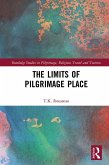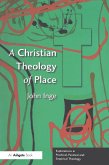Taking an interdisciplinary approach that draws on art history and heritage studies, the book considers the cathedral of Chartres, France; Medjugorje in Bosnia and Herzegovina; and the House of Mary near Ephesus, Turkey. In all three sites, the place of pilgrimage accommodates multiple different purposes and groups of people, intermingling devotional and commercial aspects, different memory narratives, and heterogeneous audiences.
By mapping these porous boundaries, the book calls into question how we define pilgrimage place, and shows how pilgrimage sites are not set apart from the everyday world, but intimately connected with wider cultural, political, and material dynamics. This study will be relevant to scholars engaging with issues of pilgrimage, cultural heritage, and art across religious studies, art history, anthropology, and sociology.
Dieser Download kann aus rechtlichen Gründen nur mit Rechnungsadresse in A, B, BG, CY, CZ, D, DK, EW, E, FIN, F, GR, HR, H, IRL, I, LT, L, LR, M, NL, PL, P, R, S, SLO, SK ausgeliefert werden.









